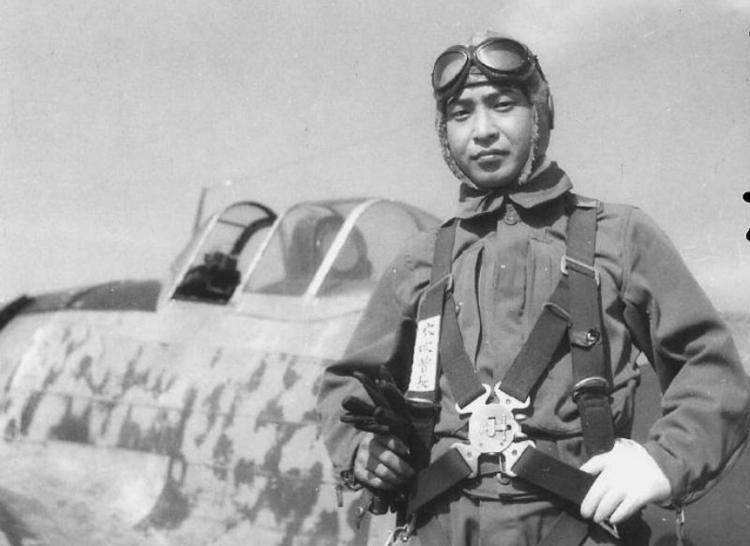Native name 穴吹 智 Died June 2005 | Name Satoru Anabuki | |
 | ||
Nickname(s) "Flower of the Youth Flyers" Born 5 December 1921Yamada ( 1921-12-05 ) Years of service IJA: 1941—1945JGSDF: 1950-1971 Unit 3rd Chutai, 50th SentaiAkeno Army Flying School (Akeno Rikugun Hiko Gakko) Service/branch | ||
War thunder ki 43 ace day 6 satoru anabuki
Lieutenant Colonel Satoru Anabuki (穴吹 智, Anabuki Satoru, December 5, 1921 – June 2005, sometimes Satoshi) was, depending on the source, the second or third highest flying ace of the Imperial Japanese Army Air Force in World War II, with 39 victories (51 claimed). Strangely enough there are 53 claimed victories to be found in his autobiography Soku no Kawa (see below), where his first triple kill (nos. 10-12) was mis-counted as just one (next kill was noted as no. 11).
Contents

Imperial Japanese Army Air Force career
Born into a farming family in the Kagawa Prefecture, he graduated high school to take the entrance examination for the Juvenile Flying Soldier School and entered the Tokyo Army Aviation School in April 1938, graduating in March 1941 in the 6th Juvenile Soldier Course and receiving a promotion to corporal in October. He was assigned to the 3rd Company of the 50th Air Squadron, stationed on Formosa in 1941.
With the outbreak of the Pacific War, he fought in the conquest of the Philippines, where he claimed his first victory, a Curtiss P-40, on December 22, 1941. On February 9, 1942, he shot down two more.
Soon after, his unit returned to Japan to exchange their Nakajima Ki-27 "Nates" for more advanced Ki-43 "Hayabusa" (allied code name "Oscar"). The 50th Air Squadron was then sent to Burma in June 1942. He was promoted to sergeant in December. On 24 January 1943, he shot down his first heavily armed B-24 bomber. He claimed to have shot down three B-24s and one P-38 fighter escort in a single engagement on 8 October 1943, but this has been disputed. The third B-24 claimed was reported rammed by him causing great damage to his aircraft in which he crash landed on the shoreline to be rescued three days later. In recognition of this achievement he was awarded an individual citation - at that time unprecedented for a pilot who was still alive.
In 1944, he was reassigned to Japan to be a flight instructor at the Akeno Army Flying School. He flew in the defense of the home islands. In December 1944, he was promoted to sergeant major and returned to action over the Philippines, where he claimed at least four F6F Hellcats shot down flying the Ki-84 "Hayate". Anabuki scored his last victory over Japan, a B-29.
Postwar
When the Japan Self-Defense Forces were formed in the early 1950s, he enlisted and flew a helicopter for many years before retiring. After the war in 1950, he enlisted in the National Police Reserve. Via the Police Reserve Force, he served as a captain flying Northeast Ground Self-Defense Force helicopters. He retired as a lieutenant colonel in 1971, subsequently joining Japan Airlines and retiring in 1984.
